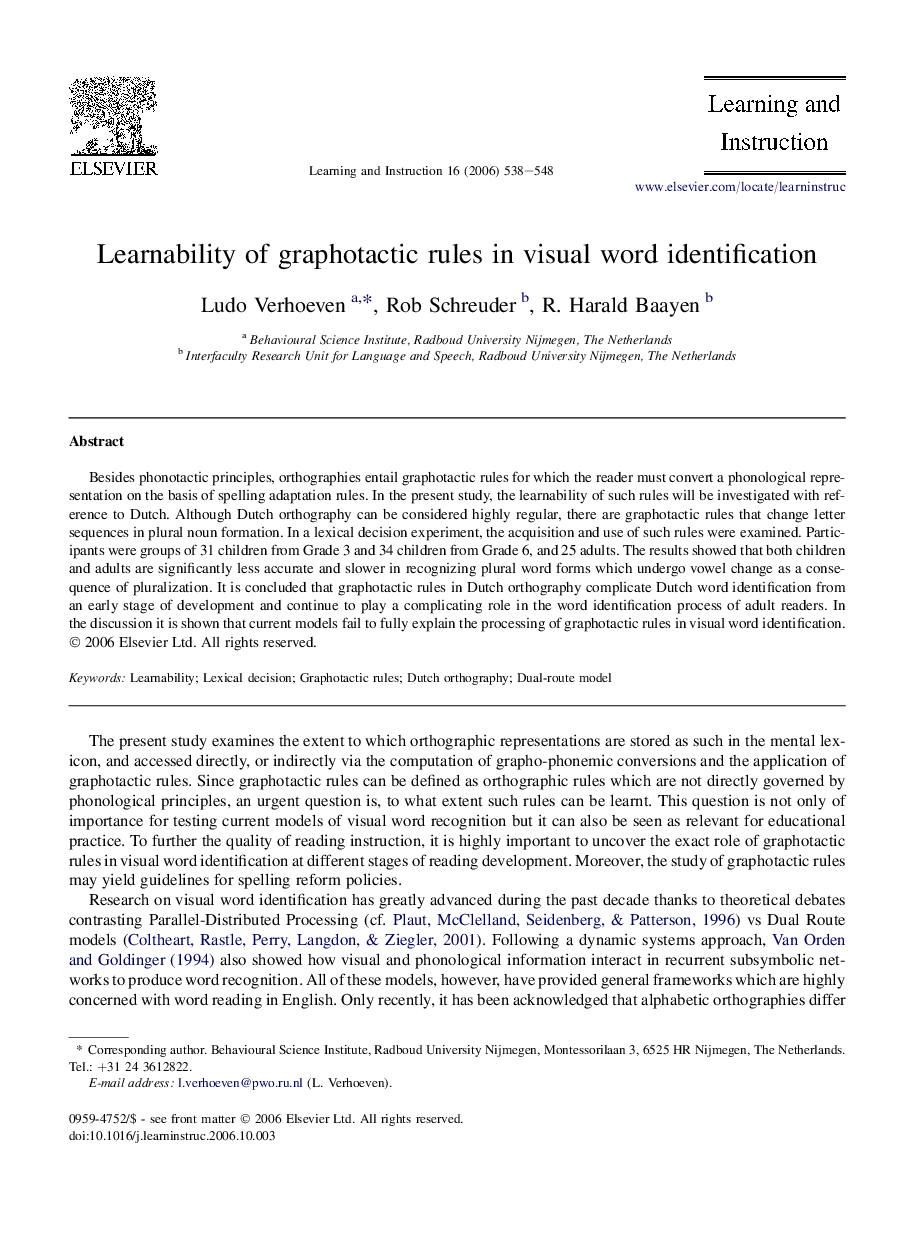| Article ID | Journal | Published Year | Pages | File Type |
|---|---|---|---|---|
| 365964 | Learning and Instruction | 2006 | 11 Pages |
Besides phonotactic principles, orthographies entail graphotactic rules for which the reader must convert a phonological representation on the basis of spelling adaptation rules. In the present study, the learnability of such rules will be investigated with reference to Dutch. Although Dutch orthography can be considered highly regular, there are graphotactic rules that change letter sequences in plural noun formation. In a lexical decision experiment, the acquisition and use of such rules were examined. Participants were groups of 31 children from Grade 3 and 34 children from Grade 6, and 25 adults. The results showed that both children and adults are significantly less accurate and slower in recognizing plural word forms which undergo vowel change as a consequence of pluralization. It is concluded that graphotactic rules in Dutch orthography complicate Dutch word identification from an early stage of development and continue to play a complicating role in the word identification process of adult readers. In the discussion it is shown that current models fail to fully explain the processing of graphotactic rules in visual word identification.
